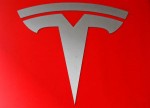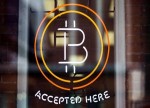
- All Instrument Types
- Indices
- Equities
- ETFs
- Funds
- Commodities
- Currencies
- Crypto
- Bonds
- Certificates
Please try another search

U.S. Dollar Rising

The US dollar remains bid. Yellen's comments and the Beige Book signal that the Federal Reserve is still on track to raise rates this year. In contrast, as Draghi will make clear today, the ECB is committed to completing its unorthodox easing.
Yesterday the Bank of Japan trimmed its inflation forecasts. It no longer expects its target to be hit until after 2018. Many continue to expect the BOJ to provide more stimulus. News that China's GDP expanded by 7% last quarter was met with derision. The PBOC is also expected to provide more stimulus.
The Bank of Canada cut rates yesterday and signaled that if needed it can cut rates or use other tools, such as asset purchases. The Canadian dollar has fallen to new multi-year lows. A soft inflation report (Q2 0.3% year-over-year) and the nearly 11% drop in milk prices has sent the New Zealand dollar to new multi-year lows. While a 25 bp rate cut for the July 23 meeting is completely priced in, there has been some new speculation of a 50 bp move. This is a bit much, but illustrates the psychology at work.
The BOE is widely seen as the next central bank to hike rates, after the Federal Reserve. Although sterling's upside momentum against the dollar has eased after an almost 3.5-cent rally five days through yesterday, it is at its best level against the euro since 2007. The SONIA curve implies a shift in BOE hike expectations to March 2016 from mid-2016 in the past couple of weeks. Wage pressures are the main reason expectations are that 1-2 MPC members will dissent as early as next month in favor of a rate hike.
The risk is that the market is getting ahead of itself here, as it has done before. Carney wants British households to begin acting as it a rate hike is coming, as he did last year, but, like the Federal Reserve is constrained by the data. News that British Gas will cut prices as of next month (others expected to follow) and the new drop in oil prices, coupled with sterling's strength on a trade-weighted measure, illustrate some of the broad economic forces that may mitigate the wage pressure.
With the Greek parliament approving the "prior action" reforms by an overwhelming majority (229-64), attention turns to the ECB meeting. Draghi is likely to note that the region's economy has moved along the way the staff forecast last month. The expansion continues, and the lending conditions, both supply and demand, are gradually improving. The media questions are likely to focus on Greece. There may be some questions too about the accelerated bond purchases that do not appear to have materialized.
The decision about Greece's ELA is key. It is not clear when it will be announced. Greece has passed the reforms needed to start negotiations for a third aid package. The ECB could wait for the national parliaments to approve the new negotiations. News that the euro area has agreed in principle to a 7 bln euro bridge loan is another sign that conditions are moving away from the edge of the abyss.
In addition to a political hurdle, there are two more technical issues the ECB must consider. First, are Greek banks still solvent, given the deposit withdrawals and deteriorating loan books? The second issue involves the collateral that Greek banks use for the ELA borrowings. Do they have sufficient collateral? Has some of the existing collateral been impaired?
Greek banks cannot re-open without new liquidity provisions. Even with the capital controls, and the practical difficulties, like ATMs running out of money, or 20 euro notes, (meaning more people end up withdrawing 50 euros rather than 60 maximum). Capital controls will likely have to remain in place for some time.
Chinese shares rose for the first time this week. The Shanghai Composite rose 0.5%, recovering from an intra-day loss of over 3%. The smaller-cap Shenzhen Composite rose 1.3%. About a quarter of the market remains suspended. Margin use fell today, after rising for the past three sessions. Separately, we note that the PBOC drained liquidity from the banking system via money market operations for the first time since April. The PBOC conducted CNY40 bln of reverse-repos in the face of a CNY85 bln maturing. This represents a net withdrawal of CNY45 bln. In the initial response to the stock market slide, the PBOC injected funds and cut rates.
Related Articles

Back in late December, I showed gold stock investors some key cycle and oscillator charts for XAU/USD and the miners, suggested that the GDX (NYSE:GDX) ETF and its component...

The central bank’s job is never easier, but in the current climate, it’s unusually tricky. In addition to the usual challenges that complicate real-time monetary policy decisions,...

At age 94, Warren Buffett can still formulate a shareholder letter like no other. His humility, candor, and wisdom is special. I always make it a point to read these because you...
Are you sure you want to block %USER_NAME%?
By doing so, you and %USER_NAME% will not be able to see any of each other's Investing.com's posts.
%USER_NAME% was successfully added to your Block List
Since you’ve just unblocked this person, you must wait 48 hours before renewing the block.
I feel that this comment is:
Thank You!
Your report has been sent to our moderators for review





Add a Comment
We encourage you to use comments to engage with other users, share your perspective and ask questions of authors and each other. However, in order to maintain the high level of discourse we’ve all come to value and expect, please keep the following criteria in mind:
Enrich the conversation, don’t trash it.
Stay focused and on track. Only post material that’s relevant to the topic being discussed.
Be respectful. Even negative opinions can be framed positively and diplomatically. Avoid profanity, slander or personal attacks directed at an author or another user. Racism, sexism and other forms of discrimination will not be tolerated.
Perpetrators of spam or abuse will be deleted from the site and prohibited from future registration at Investing.com’s discretion.